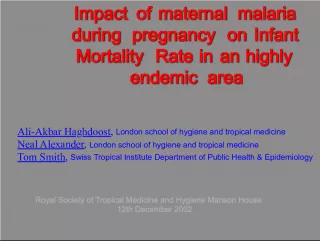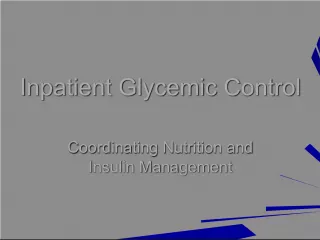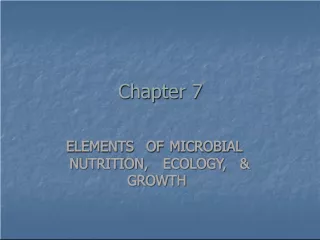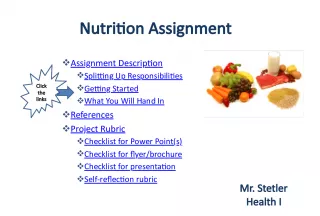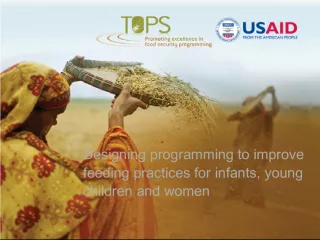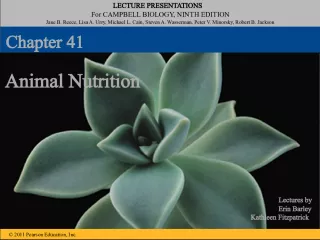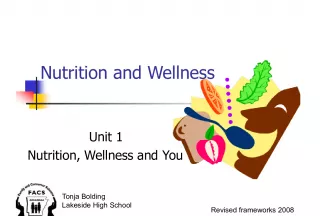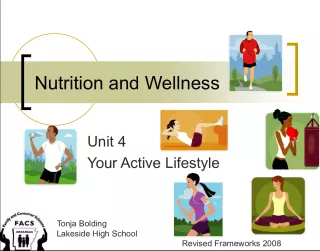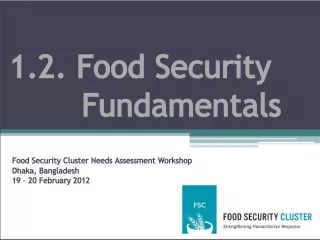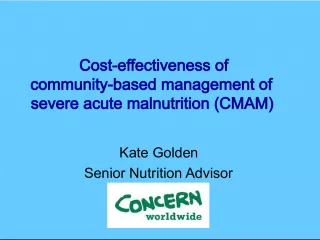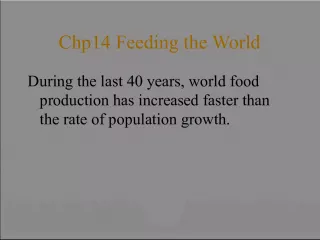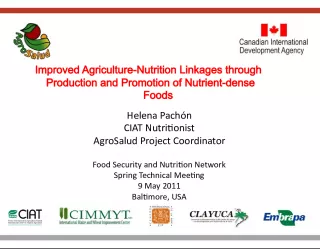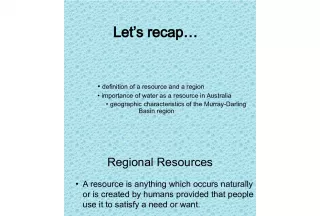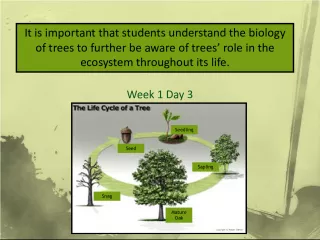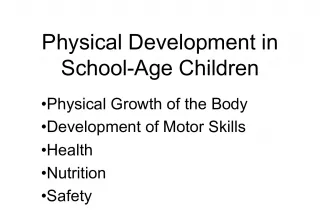Maternal Nutrition: Understanding Its Importance


In this session, we will delve into the crucial topic of maternal nutrition, exploring why it is so important for the health and well-being of both mothers and their babies. We will discuss key
- Uploaded on | 1 Views
-
 emilymoore
emilymoore
About Maternal Nutrition: Understanding Its Importance
PowerPoint presentation about 'Maternal Nutrition: Understanding Its Importance'. This presentation describes the topic on In this session, we will delve into the crucial topic of maternal nutrition, exploring why it is so important for the health and well-being of both mothers and their babies. We will discuss key. The key topics included in this slideshow are . Download this presentation absolutely free.
Presentation Transcript
Slide1MATERNAL NUTRITION
Slide2Maternal Nutrition: Session 1WHY IS MATERNAL NUTRITION IMPORTANT? TOPICS TO BE COVERED: • 1,000 Days Partnership • Scaling Up Nutrition • The Lancet Journal articles on maternal nutrition • Indicators of maternal nutrition and the Nutrition Program Design Assistant tool
Slide31,000 Days Partnership (Supported by the US Secretary of State and the Foreign Minister of Ireland): “…a global effort to jumpstart the implementation of the….” Scaling Up Nutrition Framework and Roadmap …which draws upon the evidence presented in…. The Lancet five-part series on Maternal and Child Undernutrition, January 2008: “From minus 9 months to 24 months is a window of opportunity for high impact in reducing death and disease and avoiding irreversible harm to child development.”
Slide4Let’s look at data using the Nutrition Program Design Assistant tool! * STEP 1 Indicators • Section C. Maternal Nutrition NPDA Reference Guide: http://www.coregroup.org/storage/documents/Workingpapers/NPDA_RefGuide_web.pdf NPDA Workbook: http://www.coregroup.org/storage/documents/Workingpapers/NPDA_workbook_web.pdf Note: Links must be pasted into your web browser rather than clicked on.
Slide5NPDA DATASET: DATA FROM A MIX OF DHS AND KPC SURVEYS MATERNAL NUTRITION % National Level % of women age 18 with at least one childbirth FILL WITH YOUR DATA % of newborn with low birth weight (mother’s report of baby being “very small at birth” 21% % of non-pregnant women of reproductive age with low Body Mass Index 24% % of women of reproductive age with anemia 49% % of women who received iron-folic acid supplements during last pregnancy 59% % of women who took recommended IFA supplement 90+ days during last pregnancy 10% % of women who received IPT for malaria during last pregnancy 35% % of women with 4 or more ANC visits during last pregnancy 35% % of women with at least one ANC visit during last pregnancy 86% % of women that consumed one additional serving of staple food during last pregnancy UNKNOWN
Slide6Maternal Nutrition Session 2:SMALL GROUP WORK : 1. In THREE small groups, each member of the small group shares one key MATERNAL NUTRITION message that their project promotes. 2. Repeat until you have a set of at least 3 key messages 3. Group messages according to whether you feel your project is having MORE or LESS success in achieving the desired practices 4. Discuss ESSENTIAL ELEMENTS that have contributed to successful behavior change 5. Discuss OBSTACLES to less successful behavior change
Slide7Maternal Nutrition: Session 3Looking at new IYCF materials with BCC messages: • UNICEF http://www.unicef.org/nutrition/index_58362.html • Essential Nutrition Actions http://www.coregroup.org/resources/core-tools • CARE, URC, CHS • Note: some similarities to UNICEF materials http://thewindowofopportunity.info/resources
Slide8Maternal Nutrition Session 3:SMALL GROUP WORK : 1. In FOUR small groups, read through the: • UNICEF IYCF Counseling Card Number 1 • ESSENTIAL NUTRITION ACTIONS Illustration Nos.1, 2, 3 and 4. 2. On flipchart, note any messages on maternal nutrition that these tools have that would be useful to ADD to your project’s BCC package of maternal nutrition messages 3. On flipchart, note any focus on PERSONS OF INFLUENCE in the tools that would be useful to incorporate into your project’s BCC package of maternal nutrition messages
Slide9SUMMARY OF KEY POINTSTODAY INTERACTIVE REVIEW TOMORROW
Slide10Maternal Nutrition Session 4:ESSENTIAL HEALTH SECTOR ACTIONS TO IMPROVE MATERNAL NUTRITION IN AFRICA* 1. Adequate food intake during pregnancy and lactation. 2. Adequate micronutrient intake during pregnancy and lactation. 3. Reduction of malaria infection in pregnant women in endemic areas. 4. Reduction of hookworm infection in pregnant women in endemic areas. 5. Birth spacing of three years or longer. *LINKAGES Project 2001/FHI360; IYCN Project ……/PATH
Slide11Maternal Nutrition Session 5:NUTRITION COUNSELING SKILLS : • ROLE PLAY !!!! • Discuss HANDOUT on Positive Counseling Skills from UNICEF IYCF materials
Slide12Nutrition: Session 6Let’s get M.A.D. !!!!!!
Slide13FFPIB Standard Indicators Handbook:Pages 31-32 Total children with [(D17=1 OR D18=1) AND ((age in days > 183) AND (age in days <274) AND (7-food group score > 4) AND (D51 > 2)] OR [(D17=1 OR D18=1) AND (age in days > 274) AND (age in days <730) AND (7-food group score > 4) AND (D51 > 3)] OR [(D17=0 OR D18=0) AND (age in days > 183) AND (age in days <730) AND ((D23 + D25 + D29) > 2) AND (6-food group score > 4) AND ((D23+D25+D29+D51) > 4)] _________________________________________________________ Total children with [(age in days > 183) AND (age in days < 730)]
Slide14MINIMUM ACCEPTABLE DIET INDICATOR• A “composite” indicator = an indicator “composed of” several indicators added together • Adds together indicators which look at the THREE variables of infant feeding practices: • Breastfeeding (yes or no) • FREQUENCY of feeding (number of times/day by AGE) • Diet DIVERSITY (number of food groups) Slide # 7
Slide15M.A.D. INDICATORWHY???? • FREQUENCY YES • AMOUNT NO • DENSITY NO …………with staple foods…………………… • U TILIZATION / V ARIETY YES • ACTIVE FEEDING NO • HYGIENE NO “FAD U A” or “FAT V AH” Slide # 7
Slide16MINIMUM ACCEPTABLE DIET INDICATORSlide # 7 INDIVIDUAL INDICATORS AGE RANGE 6 to 23 MONTHS = DENOMINATOR FOR COMPOSITE INDICATOR Breastfeeding status Yes, breastfed Not breastfed Frequency of feeding AGE 6-8 m : Fed TWO OR MORE times per day AGE 9-23 m : Fed THREE OR MORE times per day AGE 6-23 m : Fed FOUR OR MORE times per day and TWO must be MILK Diet diversity Foods from FOUR OR MORE food groups ( out of 7 food groups ) Foods from FOUR OR MORE food groups ( out of 6 food groups , EXCLUDING DAIRY)
Slide17This presentation was made possible bythe generous support of the American people through the United States Agency for International Development (USAID). The contents are the responsibility of Save the Children and do not necessarily reflect the views of USAID or the United States Government.
